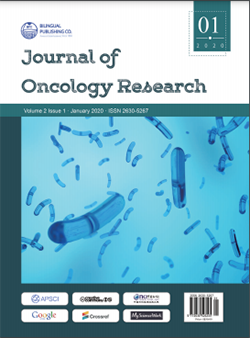The Clinical Application Value of Susceptibility Weighted Imaging in the Central Nervous System
DOI:
https://doi.org/10.30564/jor.v2i1.2192Abstract
Susceptibility weighted imaging (SWI) is a relatively new magnetic resonance imaging (MRI) technique that uses the difference in tissue magnetic susceptibility to image, and has unique value compared to traditionalmagnetic resonance imaging. This article summarizes its application inthe central nervous system and provides a reference for imaging diagnosisand clinical treatment.Keywords:
Susceptibility weighted imaging, Central nervous system diseases, Magnetic resonance imagingReferences
[1] Xin Cao, Hao Shi. The latest clinical application and development of susceptibility weighted imaging[J]. Chinese Journal of Neurology, 2018, 51(7): 550-555.
[2] Di leva A, Lam T, Alcaide-Leon P, et al. Magnetic resonance susceptibility wei-ghted imaging in neurosurgery:current applications and future perspectives[J]. J Neurosurg, 2015, 123(6): 1463-1475.
[3] Haller S,Vernooij M,Kuijer J P A, et al. Cerebral Microbleedings:Imaging and Clinical Significance[J]. Radiology, 2018, 287(1):1 1-28.
[4] Bin Ye, Liling Long. Application of susceptibility weighted imaging in cerebral infarction and related diseases[J]. Guangxi Medical Journal, 2018, 40(11): 1246-1248.
[5] Lee J, Sohn EH, Oh E, et al. Characteristics of Cerebral Microbleeds[J].Dement Neurocogn Disord, 2018, 17(3): 73-82.
[6] Fazekas F,Kleinert R,Roob G,et al.Histopathologic analysis of foci of signalloss on gradient-echo T2*-weighted MR images in patients with spontaneous intracerebral hemorrhage: evidence of microangiopathy-related microbleeds[J]. AJNR.American journal of neuroradiology, 1999, 20(4): 637-642.
[7] Ge L, Ouyang X, Ban C, et al. Cerebral microbleeds in patients with ischemic ce-rebrovascular dis-ease taking aspirin or clopidogrel[J]. Medicine, 2019, 98(9): e14685.
[8] Van CS, De KF, Sima DM, et al. Integrating diffusion kurtosis imaging,dynamic s-usceptibility-weighted contrast-enhanced MRI, and short echo time chemical shiftimaging for grading gliomas[J]. Neuro-oncology, 2014, 16(7): 1010-1021.
[9] Yuejie Chen, Yanling Huang, Yongfeng Wang, et al. The value of susceptibility weighted imaging in evaluating the grading of glioma[J]. Chinese medical imaging technology, 2010, 26(2): 247-249.
[10] J. Furtner, V. Schöpf, M. Preusser, et al. Non-invasive assessment of intratumoral vascularity using arterial spin labeling: A comparison to susceptibility-weight-ed imaging for the differentiation of primary cerebral lymphoma and glioblasto-ma[J]. European Journal of Radiology, 2014, 83(5): 806-810.
[11] Haiyong Zeng, Cuiping Zhou, Guohua He, et al. Diagnosis and application evaluation of susceptibility weighted imaging in mild traumatic brain injury[J]. Chinese Practical Medicine, 2018, 13(14): 23-24.
[12] Buijs M, Doan NT, van Rooden S, et al. In vivo assessment of iron content of the cerebral cortex in healthy aging using 7-Tesla T2*-weighted phase imaging[J]. Neurobiology of Aging, 2017, 53(5): 20-26.
[13] Haller S, Badoud S, Nguyen D, Barnaure I, Montandon M-L, Lovblad K-O, Burkhard P R. Differentiation between Parkinson disease and other forms of Parkinsonism using support vector machine analysis of susceptibility-weighted imaging (SWI): initial results[J]. European radiology, 2013, 23(1): 12-19.
[14] Qingling Huang, Wen Liu, Chaoyong Xiao, et al. Diagnosis of mild cognitive impairment and Alzheimer’s disease with 3T SWI small hypointense lesions[J]. Journal of medical imaging, 2015, 25(3): 381-385.
Downloads
How to Cite
Issue
Article Type
License
Copyright and Licensing
The authors shall retain the copyright of their work but allow the Publisher to publish, copy, distribute, and convey the work.
Journal of Oncology Research publishes accepted manuscripts under Creative Commons Attribution-NonCommercial 4.0 International License (CC BY-NC 4.0). Authors who submit their papers for publication by Journal of Oncology Research agree to have the CC BY-NC 4.0 license applied to their work, and that anyone is allowed to reuse the article or part of it free of charge for non-commercial use. As long as you follow the license terms and original source is properly cited, anyone may copy, redistribute the material in any medium or format, remix, transform, and build upon the material.
License Policy for Reuse of Third-Party Materials
If a manuscript submitted to the journal contains the materials which are held in copyright by a third-party, authors are responsible for obtaining permissions from the copyright holder to reuse or republish any previously published figures, illustrations, charts, tables, photographs, and text excerpts, etc. When submitting a manuscript, official written proof of permission must be provided and clearly stated in the cover letter.
The editorial office of the journal has the right to reject/retract articles that reuse third-party materials without permission.
Journal Policies on Data Sharing
We encourage authors to share articles published in our journal to other data platforms, but only if it is noted that it has been published in this journal.




 Aims and Scope
Aims and Scope Haichao Fu
Haichao Fu

